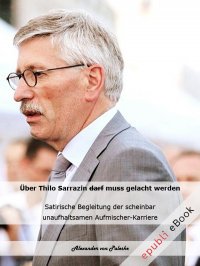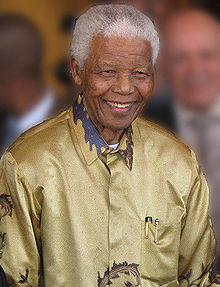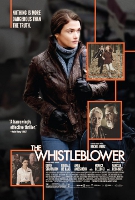"Peace Activists" with a Secret Agenda?
Part Two: The Crisis of the Marxist Left and the Rise of the WWP
 Kevin Coogan- Although Ramsey Clark greatly contributed to the IAC's credibility with respect to the outside world, the emergence of the WWP inside the American radical movement essentially stems from resistance inside the U.S. Left to the radical changes in the Soviet Union begun by Soviet leader Mikhail Gorbachev.
Kevin Coogan- Although Ramsey Clark greatly contributed to the IAC's credibility with respect to the outside world, the emergence of the WWP inside the American radical movement essentially stems from resistance inside the U.S. Left to the radical changes in the Soviet Union begun by Soviet leader Mikhail Gorbachev.
Gorbachev's attempts to reform the Soviet system sent a shock wave throughout the American Left not unlike that which had followed the partial revelations of Stalin's crimes in the famous 1956 20th Party Congress of the CPSU. Gorbachev's new policies bitterly split the American Communist Party (CPUSA), whose aging leadership clearly opposed the new turn. The CPUSA crack-up also had a profoundly disorienting effect on many of the "peace" fronts long associated with the party, as well as on its fellow travelers inside the "Rainbow Coalition"/Jessie Jackson wing of the Democratic Party.
Starting in the 1960s (when it played a major role in organizing anti-Vietnam peace demonstrations), the CPUSA managed to establish cooperative relationships with left/liberal groups like the National Commission for a Sane Nuclear Policy (SANE), the War Resisters League, the American Friends Service Committee, Women's Strike for Peace, sections of the labor movement and the peace, civil rights, "social justice" and social gospel groups associated with the National Council of Churches; all of whom helped form the base of the "progressive" wing of the Democratic Party.
When dealing with Democrats and left-liberals along "Popular Front" lines, the CPUSA carefully avoided spouting radical dogma even as its sister parties in Moscow and Havana encouraged Marxist-led revolutions in the Third World. While the CP extended its influence into left-liberal circles, particularly during the Reagan years, party "hardliners" rested content in the knowledge that the more clout the CPUSA had inside the Democratic Party and its allied constituent groupings, the less likely the Reagan Administration would be able to generate the political will needed to use military force against revolutionary regimes and movements throughout the Third World. Needless to say, this "two tier" approach met with Moscow's full approval.
All that changed with the shift of Soviet foreign policy under Gorbachev. Hardliners were infuriated with Gorbachev's decision to end Russian support to its client states in Eastern Europe. Many of these regimes were run by ideological hardliners willing to devote considerable resources to encouraging insurgent Marxist movements in the Third World. Not surprisingly, party bosses in regimes like East Germany (whose hold on power was ultimately based on Soviet military might) now became Gorbachev?s harshest critics.
Gorbachev's decision to distance the Soviet Union from Cuba also dealt a serious blow to Cuban-allied insurgency movements throughout both Central and Latin America. Since the romanticization of the Cuban Revolution, combined with Cuban military aid to the Sandinistas and the deployment of Cuban troops to help the government of Angola in its war against Jonas Savimbi's Union Nacional para a Independencia Total de Angola (UNITA, a brutal South African-, U.S.-, and Chinese-backed opposition movement) had led many American leftists into the Soviet camp in the first place, Gorbachev's actions against Cuba came as a particularly bitter blow.
The crisis inside the Soviet-allied Left became even more pronounced after Saddam Husayn's invasion of Kuwait, when Soviet foreign policy began to tilt more towards Washington than Moscow's longtime ally Baghdad.
In the midst of this larger crisis over Gorbachev and Iraq, the WWP became the first avowedly left sect more or less ideologically allied with Moscow to offer its unconditional support to Saddam Husayn as a victim of "U.S. imperialism," while it attacked Gorbachev as "a counterrevolutionary" (if not a CIA agent).
Until 1988 Sam Marcy, the WWP's three-decades long undisputed leader and theoretical guru, had taken a relatively benign view of Gorbachev, glasnost and perestroika.
By the fall of 1988, however, Marcy had decided that Gorbachev's decision to embrace both market reforms and political accommodation with the West was an unmitigated disaster. In a February 10th, 1989 forum on Soviet policy that included a spokesman from the Communist Party, the Soviet UN Mission, the Democratic Socialists of America (DSA), the African National Congress, and the now-defunct Line of March grouping, WWP spokesman Larry Holmes confessed to being "worried by perestroika" and other ideas advanced "to justify policies that seem to be alien to socialism."
On September 29th, 1989, the WWP convened an "emergency conference" (entitled "In Defense of Socialism") to unify the party around the new anti-Gorbachev line. A few weeks later, in late October 1989, the WWP National Committee met to discuss Soviet Foreign Minister Eduard Shevardnadze's October 23rd speech to the Supreme Soviet, in which Shevardnadze announced that the Soviet Union had decided to disengage from Eastern Europe.
The meeting ended with the WWP sending out "messages of solidarity" to the Communist Parties of East Germany and Czechoslovakia, according to a report in the November 9th, 1989 WW. Nor did the WWP shy away from publicly defending Romania's Dracula-like dictator Nicholae Ceausescu, whom the WWP worked vigorously (but with little success) to turn from monster to mensch inside the pages of Workers World.
The WWP was equally consistent when it came to Asia. The sect even applauded the brutal Chinese repression of pro-democracy students and workers at Tiananmen Square. In the April 12th, 1990 WW, Sara Flounders (currently a leader of the "human rights" organization IAC), wrote: "Now the significance of the suppression of the right-wing movement in Tiananmen Square" could be seen from a "clearer perspective"; namely, that China had "smashed the plot of international anti-China forces to subvert the legal government and the socialist system of China."
How did Flounders know this to be true? Because Chinese Premier Li Peng said so in a March 20th speech to the National Peoples Congress in Beijing.
The WWP's public opposition to Gorbachev made it a potential vehicle for hard Left elements then trying to construct their own line independent of Moscow. Left stars like famed radical lawyer William Kunstler openly endorsed the WWP line on Gorbachev in blurbs for Sam Marcy's April 1990 book Perestroika: A Marxist Critique (essentially a compilation of his articles written for WW). Spurred on by the favorable response, the WWP intensified its attack. A September 8th, 1991 WW editorial even claimed that the introduction of capitalism into Eastern Europe "has been a tyranny as bad as any terror." On September 28-29th, 1991, the WWP held an "emergency conference" in New York "in response to the Gorbachev-Yeltsin takeover" in Russia.
According to an article in the October 10th, 1991 WW, "over 45 comrades" spoke on an open microphone at the conference about the "counterrevolutionary" events in Russia and -- surprise, surprise -- "not one of them found cause to oppose the party's analysis."
One WWP'er even expressed pleasure about the way that China had "stopped in Tiananmen Square" the "so-called democracy movement," while another praised the former East Germany as "a haven for gay liberation"!
 "Peace Activists" with a Secret Agenda? Introduction & Part One: Ramsey Clark from Attorney General to the IAC
"Peace Activists" with a Secret Agenda? Introduction & Part One: Ramsey Clark from Attorney General to the IAC
 Next: Part Three: Stealth Trotskyism and the Mystery of the WWP
Next: Part Three: Stealth Trotskyism and the Mystery of the WWP
Gorbachev's attempts to reform the Soviet system sent a shock wave throughout the American Left not unlike that which had followed the partial revelations of Stalin's crimes in the famous 1956 20th Party Congress of the CPSU. Gorbachev's new policies bitterly split the American Communist Party (CPUSA), whose aging leadership clearly opposed the new turn. The CPUSA crack-up also had a profoundly disorienting effect on many of the "peace" fronts long associated with the party, as well as on its fellow travelers inside the "Rainbow Coalition"/Jessie Jackson wing of the Democratic Party.
Starting in the 1960s (when it played a major role in organizing anti-Vietnam peace demonstrations), the CPUSA managed to establish cooperative relationships with left/liberal groups like the National Commission for a Sane Nuclear Policy (SANE), the War Resisters League, the American Friends Service Committee, Women's Strike for Peace, sections of the labor movement and the peace, civil rights, "social justice" and social gospel groups associated with the National Council of Churches; all of whom helped form the base of the "progressive" wing of the Democratic Party.
When dealing with Democrats and left-liberals along "Popular Front" lines, the CPUSA carefully avoided spouting radical dogma even as its sister parties in Moscow and Havana encouraged Marxist-led revolutions in the Third World. While the CP extended its influence into left-liberal circles, particularly during the Reagan years, party "hardliners" rested content in the knowledge that the more clout the CPUSA had inside the Democratic Party and its allied constituent groupings, the less likely the Reagan Administration would be able to generate the political will needed to use military force against revolutionary regimes and movements throughout the Third World. Needless to say, this "two tier" approach met with Moscow's full approval.
All that changed with the shift of Soviet foreign policy under Gorbachev. Hardliners were infuriated with Gorbachev's decision to end Russian support to its client states in Eastern Europe. Many of these regimes were run by ideological hardliners willing to devote considerable resources to encouraging insurgent Marxist movements in the Third World. Not surprisingly, party bosses in regimes like East Germany (whose hold on power was ultimately based on Soviet military might) now became Gorbachev?s harshest critics.
Gorbachev's decision to distance the Soviet Union from Cuba also dealt a serious blow to Cuban-allied insurgency movements throughout both Central and Latin America. Since the romanticization of the Cuban Revolution, combined with Cuban military aid to the Sandinistas and the deployment of Cuban troops to help the government of Angola in its war against Jonas Savimbi's Union Nacional para a Independencia Total de Angola (UNITA, a brutal South African-, U.S.-, and Chinese-backed opposition movement) had led many American leftists into the Soviet camp in the first place, Gorbachev's actions against Cuba came as a particularly bitter blow.
The crisis inside the Soviet-allied Left became even more pronounced after Saddam Husayn's invasion of Kuwait, when Soviet foreign policy began to tilt more towards Washington than Moscow's longtime ally Baghdad.
In the midst of this larger crisis over Gorbachev and Iraq, the WWP became the first avowedly left sect more or less ideologically allied with Moscow to offer its unconditional support to Saddam Husayn as a victim of "U.S. imperialism," while it attacked Gorbachev as "a counterrevolutionary" (if not a CIA agent).
Until 1988 Sam Marcy, the WWP's three-decades long undisputed leader and theoretical guru, had taken a relatively benign view of Gorbachev, glasnost and perestroika.
By the fall of 1988, however, Marcy had decided that Gorbachev's decision to embrace both market reforms and political accommodation with the West was an unmitigated disaster. In a February 10th, 1989 forum on Soviet policy that included a spokesman from the Communist Party, the Soviet UN Mission, the Democratic Socialists of America (DSA), the African National Congress, and the now-defunct Line of March grouping, WWP spokesman Larry Holmes confessed to being "worried by perestroika" and other ideas advanced "to justify policies that seem to be alien to socialism."
On September 29th, 1989, the WWP convened an "emergency conference" (entitled "In Defense of Socialism") to unify the party around the new anti-Gorbachev line. A few weeks later, in late October 1989, the WWP National Committee met to discuss Soviet Foreign Minister Eduard Shevardnadze's October 23rd speech to the Supreme Soviet, in which Shevardnadze announced that the Soviet Union had decided to disengage from Eastern Europe.
The meeting ended with the WWP sending out "messages of solidarity" to the Communist Parties of East Germany and Czechoslovakia, according to a report in the November 9th, 1989 WW. Nor did the WWP shy away from publicly defending Romania's Dracula-like dictator Nicholae Ceausescu, whom the WWP worked vigorously (but with little success) to turn from monster to mensch inside the pages of Workers World.
The WWP was equally consistent when it came to Asia. The sect even applauded the brutal Chinese repression of pro-democracy students and workers at Tiananmen Square. In the April 12th, 1990 WW, Sara Flounders (currently a leader of the "human rights" organization IAC), wrote: "Now the significance of the suppression of the right-wing movement in Tiananmen Square" could be seen from a "clearer perspective"; namely, that China had "smashed the plot of international anti-China forces to subvert the legal government and the socialist system of China."
How did Flounders know this to be true? Because Chinese Premier Li Peng said so in a March 20th speech to the National Peoples Congress in Beijing.
The WWP's public opposition to Gorbachev made it a potential vehicle for hard Left elements then trying to construct their own line independent of Moscow. Left stars like famed radical lawyer William Kunstler openly endorsed the WWP line on Gorbachev in blurbs for Sam Marcy's April 1990 book Perestroika: A Marxist Critique (essentially a compilation of his articles written for WW). Spurred on by the favorable response, the WWP intensified its attack. A September 8th, 1991 WW editorial even claimed that the introduction of capitalism into Eastern Europe "has been a tyranny as bad as any terror." On September 28-29th, 1991, the WWP held an "emergency conference" in New York "in response to the Gorbachev-Yeltsin takeover" in Russia.
According to an article in the October 10th, 1991 WW, "over 45 comrades" spoke on an open microphone at the conference about the "counterrevolutionary" events in Russia and -- surprise, surprise -- "not one of them found cause to oppose the party's analysis."
One WWP'er even expressed pleasure about the way that China had "stopped in Tiananmen Square" the "so-called democracy movement," while another praised the former East Germany as "a haven for gay liberation"!
sfux - 15. Aug, 08:00 Article 4088x read
















































